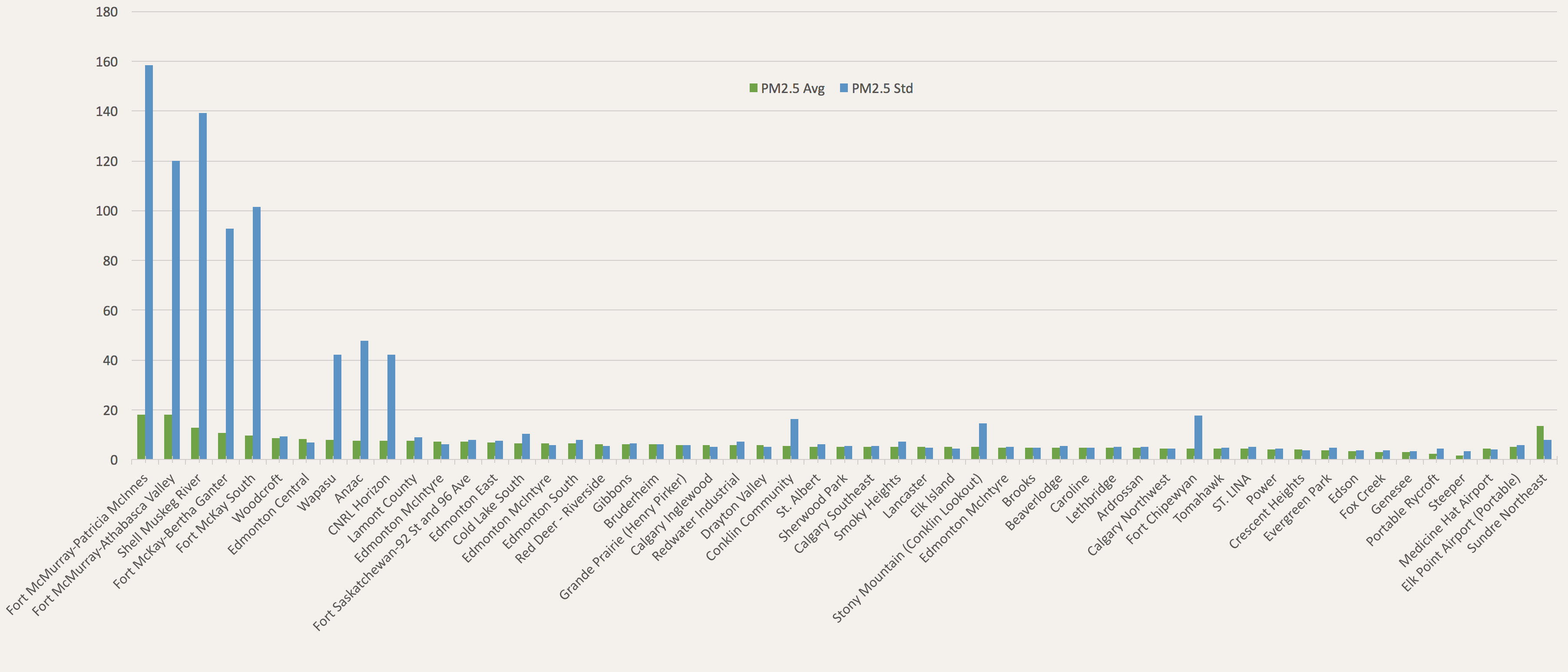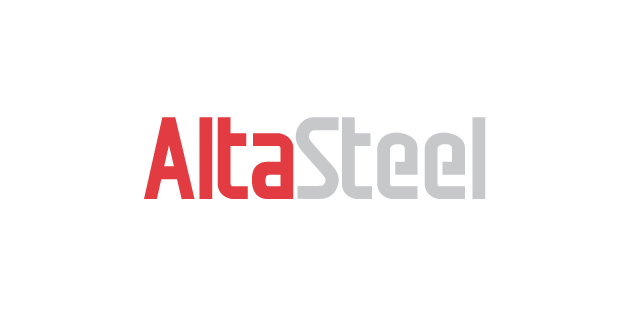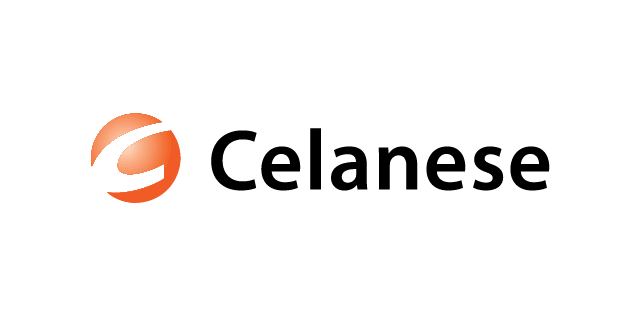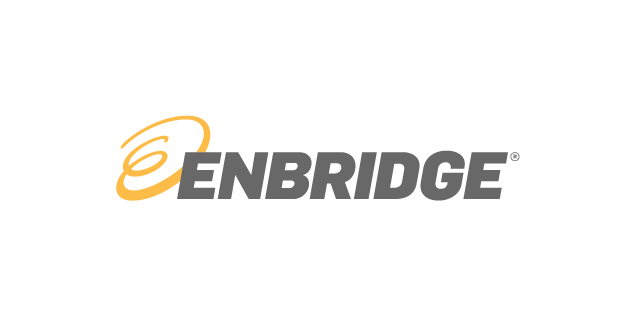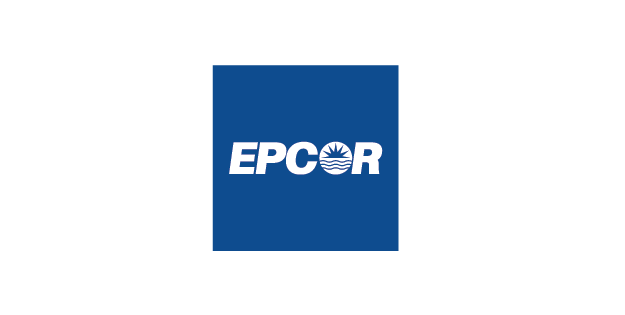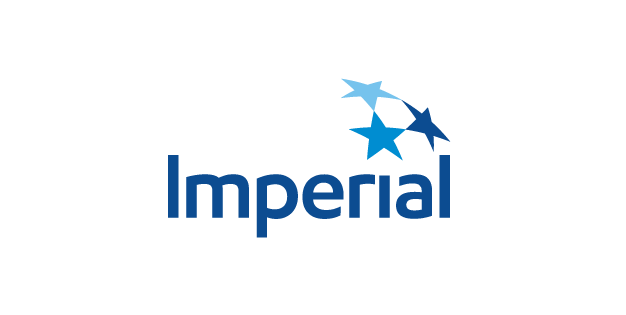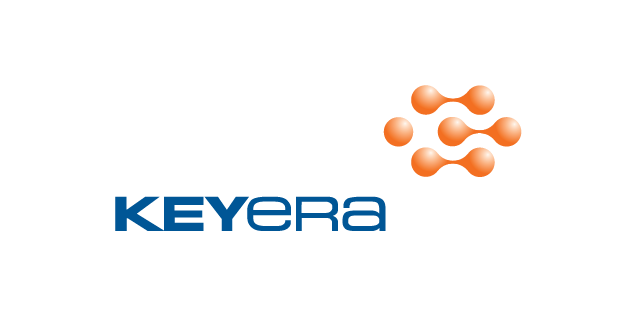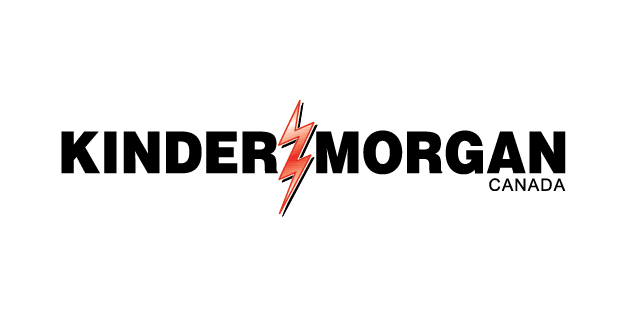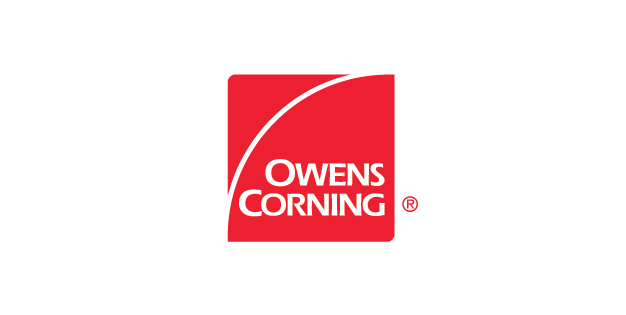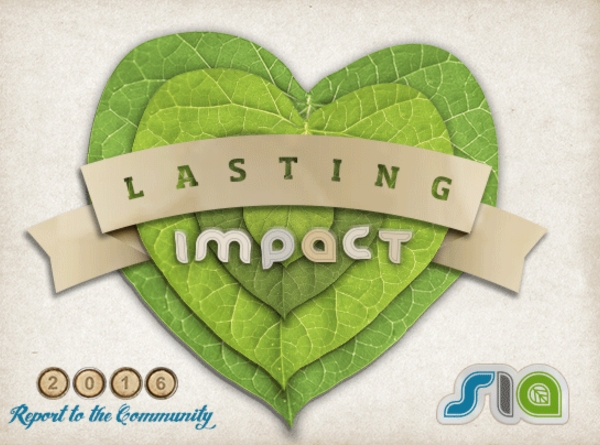
Lasting Impact
There are many ways to measure progress. Be it distance travelled, partnerships forged, innovative discoveries or lessons learned, each one of these elements reflects growth and development over time. Over the last four decades, the Strathcona Industrial Association has continued to evolve alongside the communities we proudly serve. By working collaboratively on environmental monitoring and performance, safety promotion and community well-being initiatives, we are continuing to add value every day.
Who We Are
Representing east Edmonton and Strathcona County heavy industrial operators, SIA is a not-for-profit association with deep roots. Since our inception in 1974, SIA has continued to provide a common voice for industry as we work with the community, County and City to promote a safe and healthy working and living environment.
What We Do
SIA works collaboratively with our member companies, government and local communities to increase awareness and discussion, to actively monitor environmental health, and to ensure responsible and sustainable local development. Our success is not only measured by shared discovery, innovation, and advocacy, it is evidenced by positive and enduring contributions in the communities we call home.
Time To Reflect
With our great nation celebrating its 150th birthday this year, it seemed fitting to look back at our own achievements over the last few decades. The stories you will read in this year’s annual report illustrate the depth and breadth of experience that we are fortunate to have in the capital region.

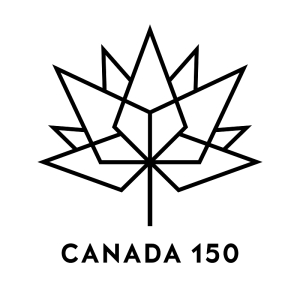
Our members come from diverse backgrounds, yet they continue to find common ground for impactful and collaborative action. Each of our 12 member companies have made a commitment to invest time and effort into looking beyond the scope of their day-to-day business.
SIA members appreciate that partnership, stewardship and environmental responsibility are the hallmarks of great industry leaders. They are elements that not only set businesses apart, but also secure a bright future for generations to come.
Our members offer innovative, timely and environmentally responsible solutions to pressing global issues. Whether it is energy saving insulation, polymers for solar panels, recycling of disused vehicles, or leading-edge water saving initiatives, SIA members are having a positive impact around the world.
Our knowledgeable and dedicated members strive for continuous improvement. We also recognize that not all benefits of our individual and shared work are immediately visible, but we know that in time, they will become more apparent. Ours is a long-term vision for synergy and success.
Over the last 40 years we have been fortunate to help shape this region. In addition to establishing one of Alberta’s longest standing community air quality monitoring networks, we have been actively involved in a range of regional and provincial initiatives to protect precious natural resources, safeguard economic livelihood and preserve continued quality of life. This is our great privilege and responsibility.
As President, I am pleased to share the many remarkable milestones we have achieved throughout the years as well as data from our 2016 Annual Ambient Air Monitoring Report. Going forward I am confident that we will continue to build on this momentum as we continue to expand vital networks, advance innovative partnerships, increase our knowledge and experience, and uplift the communities where we work and live.
John P.
SIA Board President

Time To Reflect
With our great nation celebrating its 150th birthday this year, it seemed fitting to look back at our own achievements over the last few decades. The stories you will read in this year’s annual report illustrate the depth and breadth of experience that we are fortunate to have in the capital region.

Our members come from diverse backgrounds, yet they continue to find common ground for impactful and collaborative action. Each of our 12 member companies have made a commitment to invest time and effort into looking beyond the scope of their day-to-day business.
SIA members appreciate that partnership, stewardship and environmental responsibility are the hallmarks of great industry leaders. They are elements that not only set businesses apart, but also secure a bright future for generations to come.
Our members offer innovative, timely and environmentally responsible solutions to pressing global issues. Whether it is energy saving insulation, polymers for solar panels, recycling of disused vehicles, or leading-edge water saving initiatives, SIA members are having a positive impact around the world.
Our knowledgeable and dedicated members strive for continuous improvement. We also recognize that not all benefits of our individual and shared work are immediately visible, but we know that in time, they will become more apparent. Ours is a long-term vision for synergy and success.
Over the last 40 years we have been fortunate to help shape this region. In addition to establishing one of Alberta’s longest standing community air quality monitoring networks, we have been actively involved in a range of regional and provincial initiatives to protect precious natural resources, safeguard economic livelihood and preserve continued quality of life. This is our great privilege and responsibility.
As President, I am pleased to share the many remarkable milestones we have achieved throughout the years as well as data from our 2016 Annual Ambient Air Monitoring Report. Going forward I am confident that we will continue to build on this momentum as we continue to expand vital networks, advance innovative partnerships, increase our knowledge and experience, and uplift the communities where we work and live.
John P.
SIA Board President
Industrial Insight
SIA is a not-for-profit association representing east Edmonton and Strathcona County heavy industrial operators. Our members share a commitment to safe and environmentally responsible operations and are proud to provide a common voice for industry.

Distance Travelled Over The Decades
Our community and organization has a rich and storied past. While SIA originated in the seventies, most of our members began their local operations in the postwar period. In fact, it was this boom in activity in the late forties and early fifties that spurred the development of communities like sherwood park and gold bar in order to accommodate the workers and families that were drawn to the region. These days, sia members continue to provide employment and local opportunities. Collectively, our member companies employ more than 2,500 people in the region.
Indeed, much has happened since we began this journey 42 years ago. Here are a few stand out moments in time:

Seasonal Downtimes
Our members are invested in continuous quality improvement, which means that from time to time, preventative maintenance, renovations or upgrades are required. These planned breaks in production are known throughout the industry as turnarounds.

Turnarounds can bring benefits to local communities. With many skilled workers being brought in to carry out specialist activities, the local economy often gets a boost. In addition to increased spending on goods and services, everyone reaps the rewards of enhanced operational safety and efficiency.
TURNAROUNDS
The suspension or slowing of production for a specific time period while inspections are performed and necessary repairs, replacements and technology upgrades are completed.

Seasonal Downtimes
Our members are invested in continuous quality improvement, which means that from time to time, preventative maintenance, renovations or upgrades are required. These planned breaks in production are known throughout the industry as turnarounds.
Turnarounds can bring benefits to local communities. With many skilled workers being brought in to carry out specialist activities, the local economy often gets a boost. In addition to increased spending on goods and services, everyone reaps the rewards of enhanced operational safety and efficiency.
TURNAROUNDS
The suspension or slowing of production for a specific time period while inspections are performed and necessary repairs, replacements and technology upgrades are completed.

Time For Community
It just takes a moment to have a profound impact. SIA understands the importance of local connections and ongoing support. Our members are actively involved in a number of signature events and causes.

River Day
On June 11 2016, nearly 1,000 came together to learn about recreational water safety on the North Saskatchewan River. SIA is an avid supporter of this City of Edmonton event at the Rundle Park Family Centre and enjoys hosting the pancake breakfast every year.

Greater Hardisty Community Day
In September, SIA once again sponsored the pancake breakfast for this annual neighbourhood celebration. Several of our members were also actively involved, supporting aspects of the day and sharing information and resources with local residents.

United Way’s Day Of Caring Events
Many of our member companies participate in the United Way’s Day of Caring events. These events help fund local social welfare agencies including; Edmonton Food Bank, Hope Mission, the Mustard Seed, Homeless Connect Edmonton and Kara Family Resource Centre.
Charitable contributions, gifts of time, or a new awareness of our actions, we all have the ability to make a difference.
Essential Timing
For nearly 40 years, more than 30 industrial companies and community agencies have been coming together to plan for, and test emergency response readiness in east Edmonton and Strathcona County. The Strathcona District Mutual Assistance Program (SDMAP) is continuing to play a vital role in our communities by raising awareness and providing essential information about dangers and safety measures specific to industrial materials.


Essential Timing
For nearly 40 years, more than 30 industrial companies and community agencies have been coming together to plan for, and test emergency response readiness in east Edmonton and Strathcona County. The Strathcona District Mutual Assistance Program (SDMAP) is continuing to play a vital role in our communities by raising awareness and providing essential information about dangers and safety measures specific to industrial materials.
 SDMAP uses the combined expertise and equipment of all its members, which includes emergency response crews from refineries, petrochemical plants, manufacturers and oil and gas transportation companies. All members have emergency response plans that integrate into community response plans.
SDMAP uses the combined expertise and equipment of all its members, which includes emergency response crews from refineries, petrochemical plants, manufacturers and oil and gas transportation companies. All members have emergency response plans that integrate into community response plans.

Readiness requires extensive preparation. Maintaining a current inventory of available equipment and trained staff as well as conducting routine hazard assessments, gives SDMAP partners the ability to make sound emergency response decisions when time is of the essence.

Routine training exercises conducted on member sites gives SDMAP partners the opportunity to familiarize themselves with other industrial plants as well as different types of response equipment. In training situations, members have the opportunity to test and improve emergency response plans and to strengthen their working relationships along the way.
These new resources complement the collective suite of emergency response resources available in the region. Be it fire trucks, portable pumps or command vehicles, SDMAP is equipping and protecting our industry professionals and communities.


SIA’s network was one of the first of its kind in Alberta and is responsible for gathering scientifically valid data in Sherwood Park, Goldbar, Beverly and Ardrossan that provides a good understanding of air quality in the larger area.
Using continuous monitoring (readings taken every second, 365 days/year), and intermittent monitoring (sensors exposed for 24 hours every six days), these stations collect information pertaining to Hydrogen Sulphide, Sulphur Dioxide, Oxides of Nitrogen, Total Hydrocarbons and Particulate Matter levels in the air as well as wind speed, direction and temperature. This data provides reliable real-time information and is readily available to the public via the Alberta Capital Airshed website.
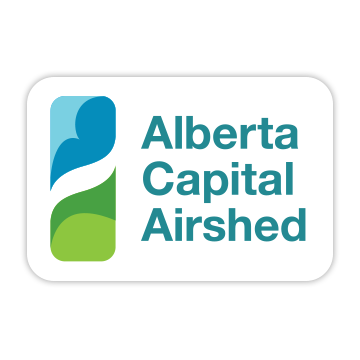
SIA is proud to be a part of the Alberta Capital Airshed (ACA). This air quality partnership is one of ten Airsheds in the province and is integral to protecting and improving air quality in our community.
In addition to developing air quality management and monitoring recommendations, the ACA relies on air quality data from SIA’s monitoring stations and five other locations to calculate the region’s Air Quality Health Index (AQHI). The AQHI is a useful tool that provides a snapshot of outside air quality in the region and relative health risk presented by a mixture of common air pollutants.

The quality of the air we breathe is influenced by a number of factors. Air pollutants originate from a combination of ‘area sources’ such as home and commercial operations, ‘point sources’ from industry and ‘non-point sources’ from vehicle emissions. Local topography, wind speed and direction, temperature and turbulence also play a key role in the rate at which these air contaminants will eventually disperse.
For more information about Air Quality Monitoring Network click here.

Charts And Graphs
By consistently monitoring and measuring our performance, we are better able to understand the effects of industry and gather scientifically valid data about current local air quality and long-term trends. We share this information via our on-going reporting to Alberta Environment and Parks and our annual Ambient Air Monitoring Report.
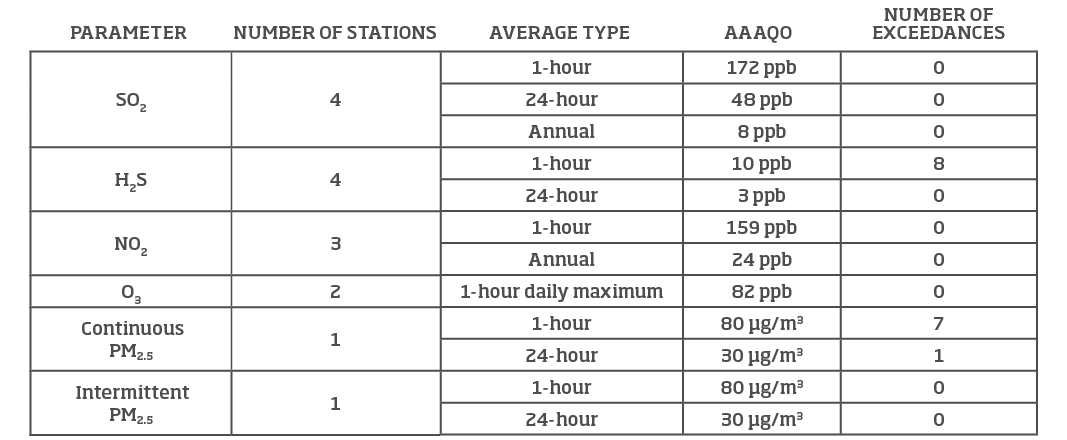
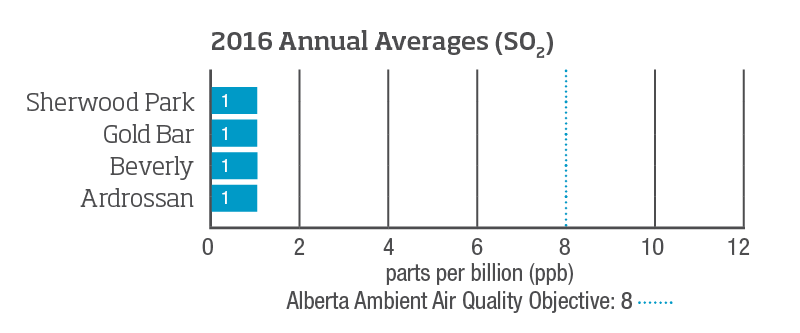
Sulphur Dioxide is a colourless, non-flammable gas with a pungent odour. Industrial sources include sulphur extraction plants, natural gas processing plants, oil sands operations, power plants, oil refineries, pulp and paper mills and fertilizer plants.
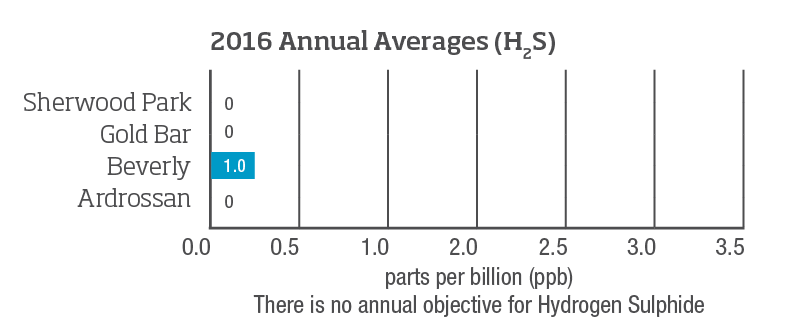
Hydrogen Sulphide is a colourless, flammable gas that is extremely hazardous and toxic. It has a distinct rotten egg odour, and can be identified at relatively low concentrations by people. The gas commonly exists in places such as sewers, sewage treatment plants and manure stockpiles. Industrial sources include petroleum and natural gas extraction and refining, pulp and paper manufacturing, chemical manufacturing and waste disposal.
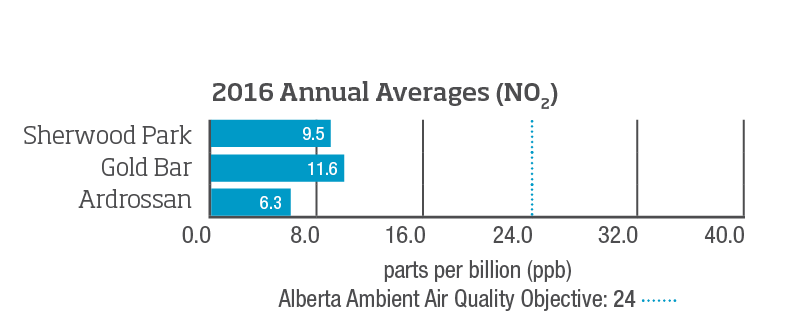
Nitrogen Dioxide is a reddish orange-brown gas with a strong, irritating odour. It is corrosive, highly oxidizing and non-combustible. Man-made sources include motor vehicles, oil and gas industries and power generation plants as well as combustion from forest fires and home heating.
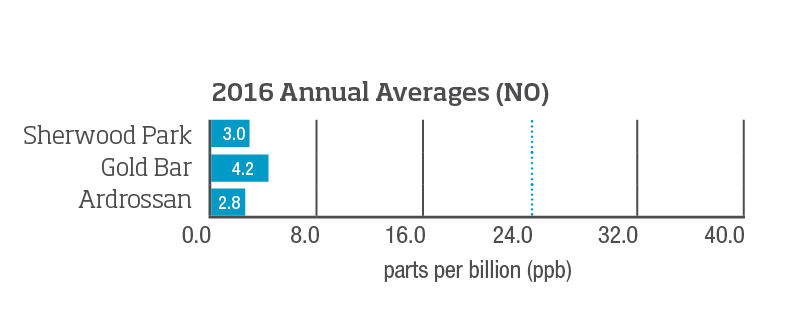
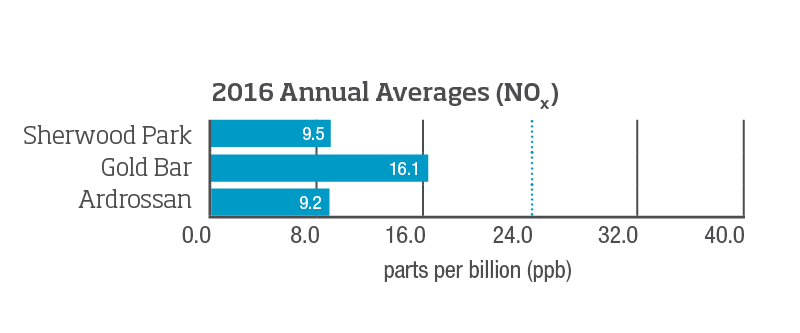
Also known as Nitric Oxide, NO is a common pollutant. It results from the combustion of substances in the air that are present due to fuel burning activities such as driving and power production. While this colorless, toxic gas, plays an important role in our bodies, it is of concern because it can react to form NO2, which is a component of smog and may cause acid rain.
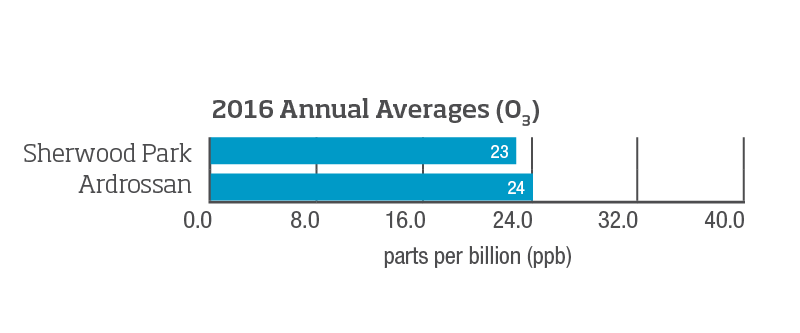
Ozone occurs naturally in the upper atmosphere (stratosphere) and protects us from harmful ultraviolet radiation. However, ozone in the lower atmosphere (troposphere) acts as a strong oxidant, and is a key component of smog. Results from 30-day passive ozone monitoring showed measurements ranging between 13 and 39 ppb, with ozone concentration tending to be higher during the spring months.
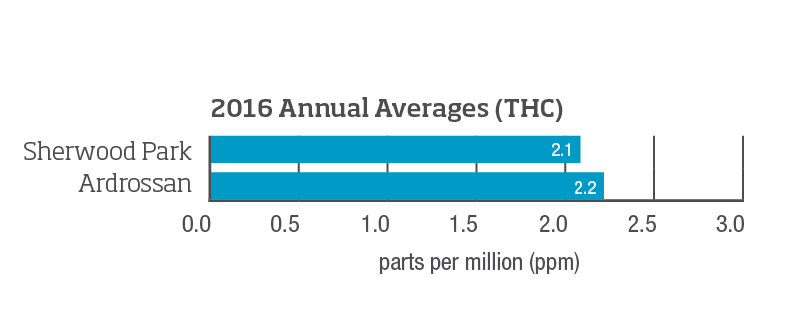
Total Hydrocarbons refer to a broad range of chemicals containing carbon and hydrogen atoms, including methane, propane, benzenes and many other compounds. Sources include motor vehicles, petroleum refineries, petrochemical plants, combustion as well as smaller sources like dry cleaning facilities, solvent handling and gas tanks.
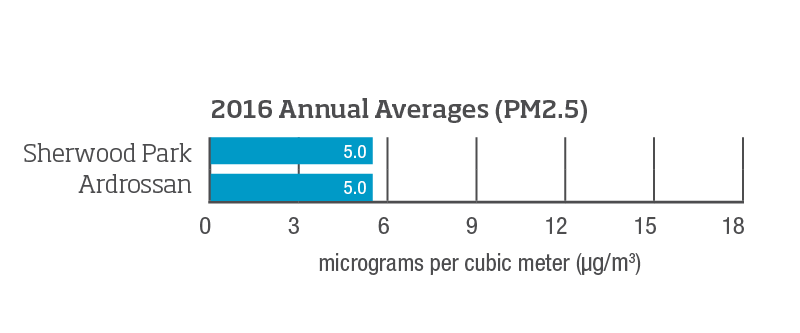
This includes particles with diameters less than or equal to 2.5 microns, which at this size can penetrate into lungs and are referred to as respirable. Sources include soil, road and agricultural dust, smoke, forest fires, traffic emissions and industrial activity. The Sherwood Park, Gold Bar and Beverly stations measure Particulate Matter.
Average H2S Concentration (Parts Per Billion)
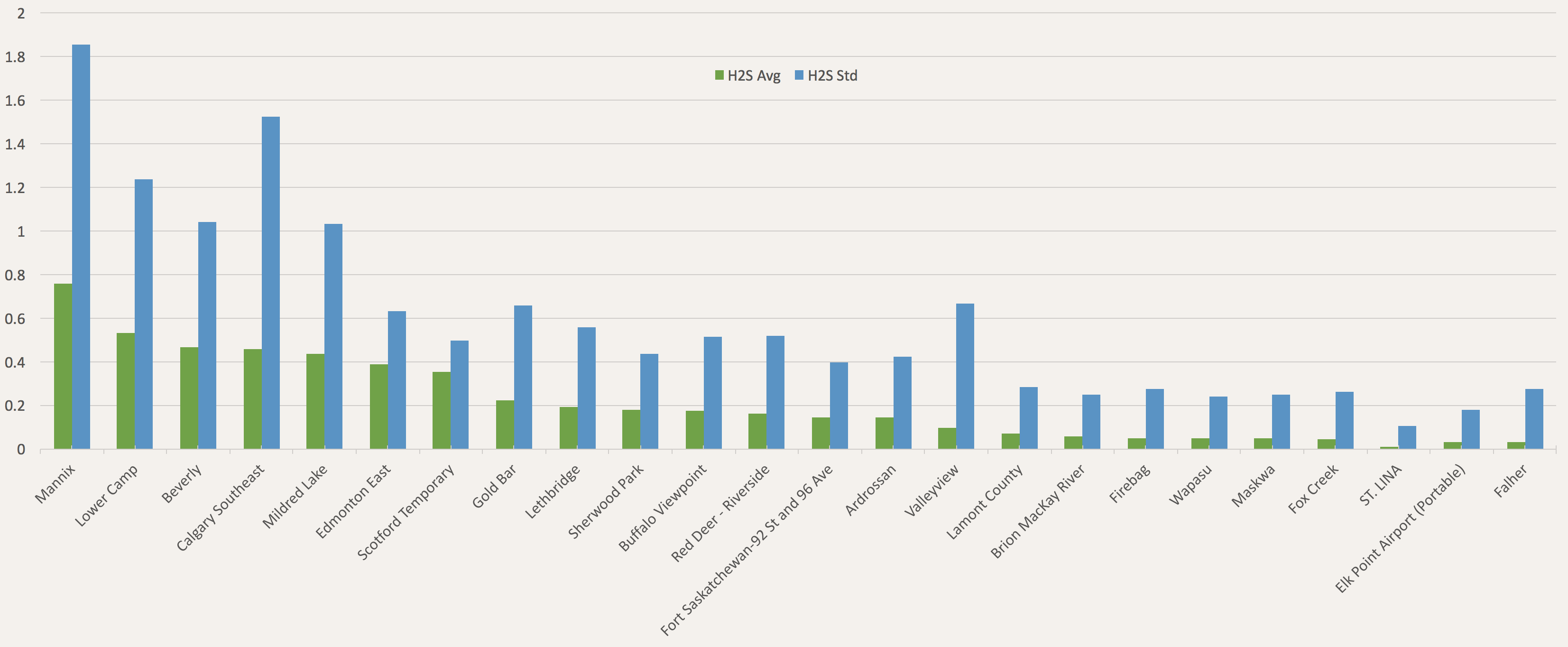
Average SO2 Concentration (Parts Per Billion)
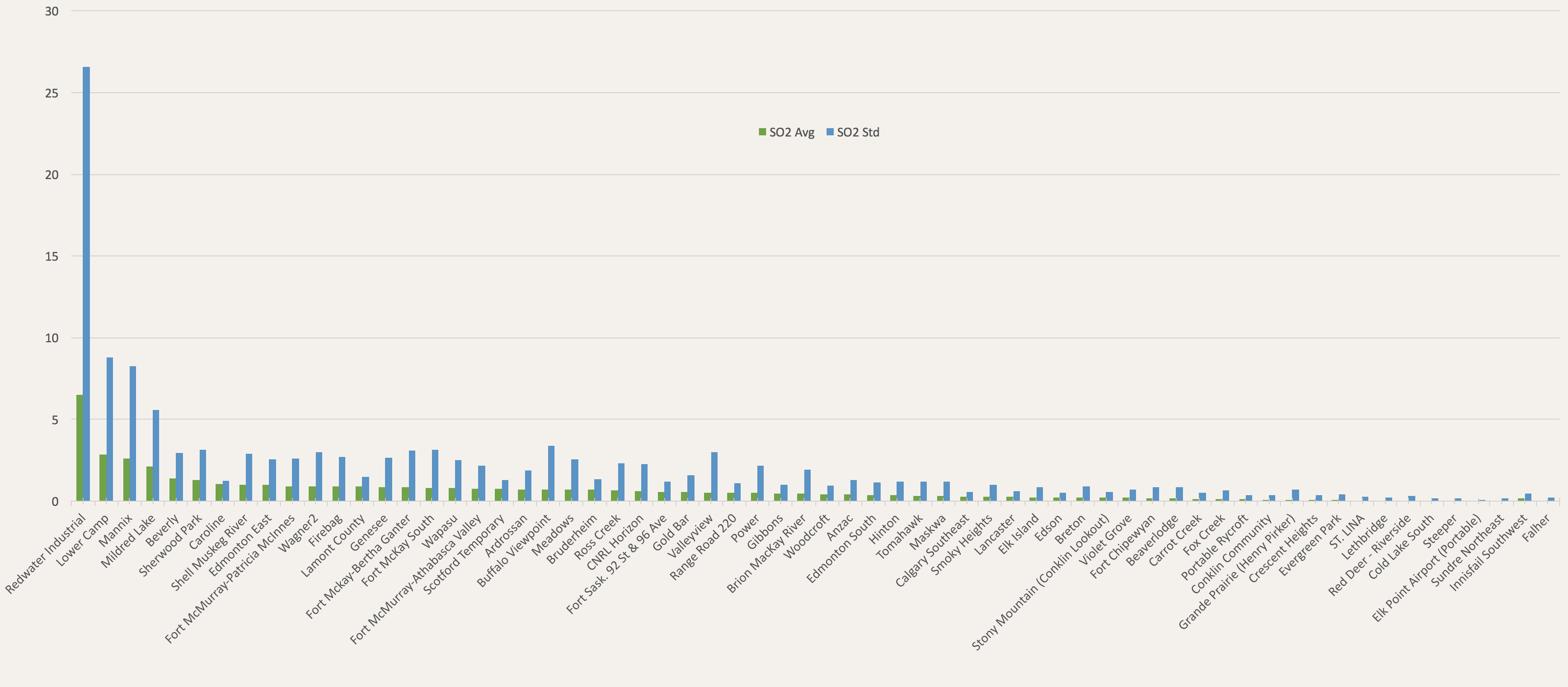
Average NO2 Concentration (Parts Per Billion)
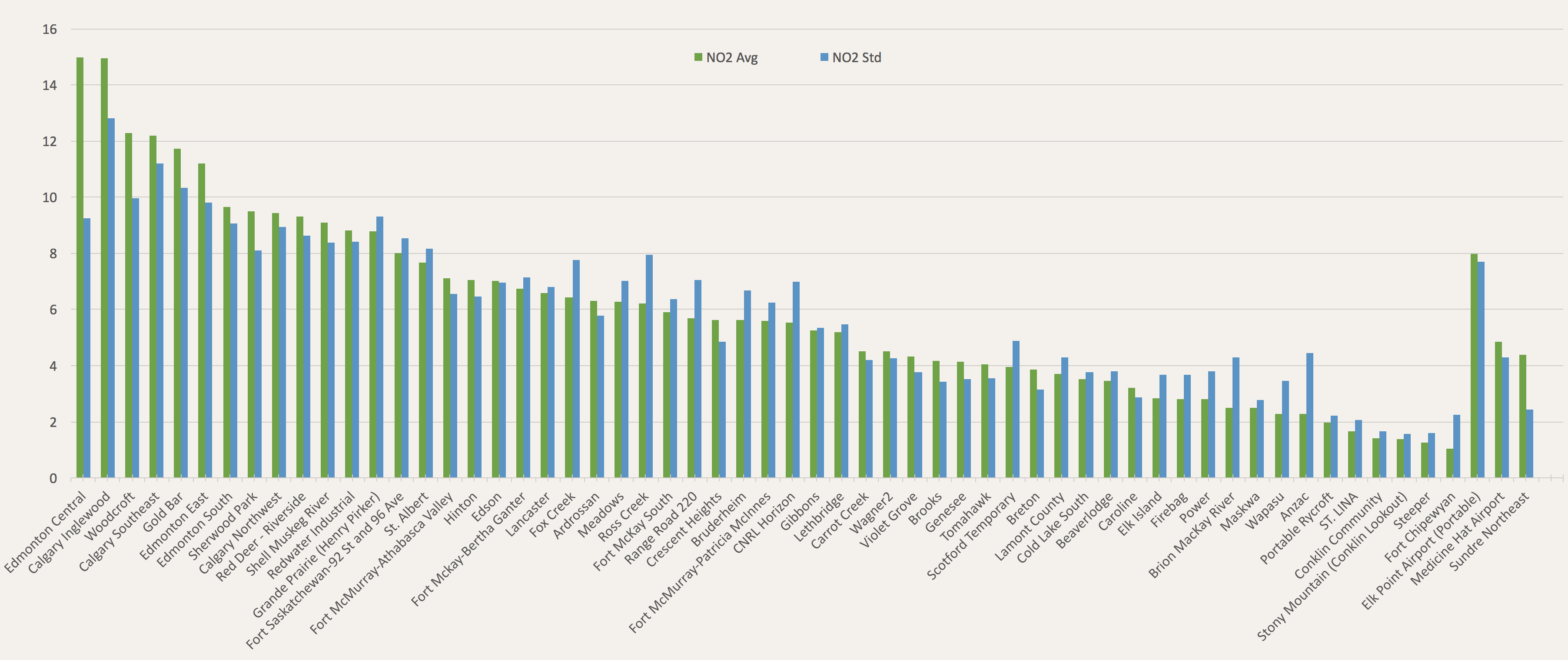
Average O3 Concentration (Parts Per Billion)
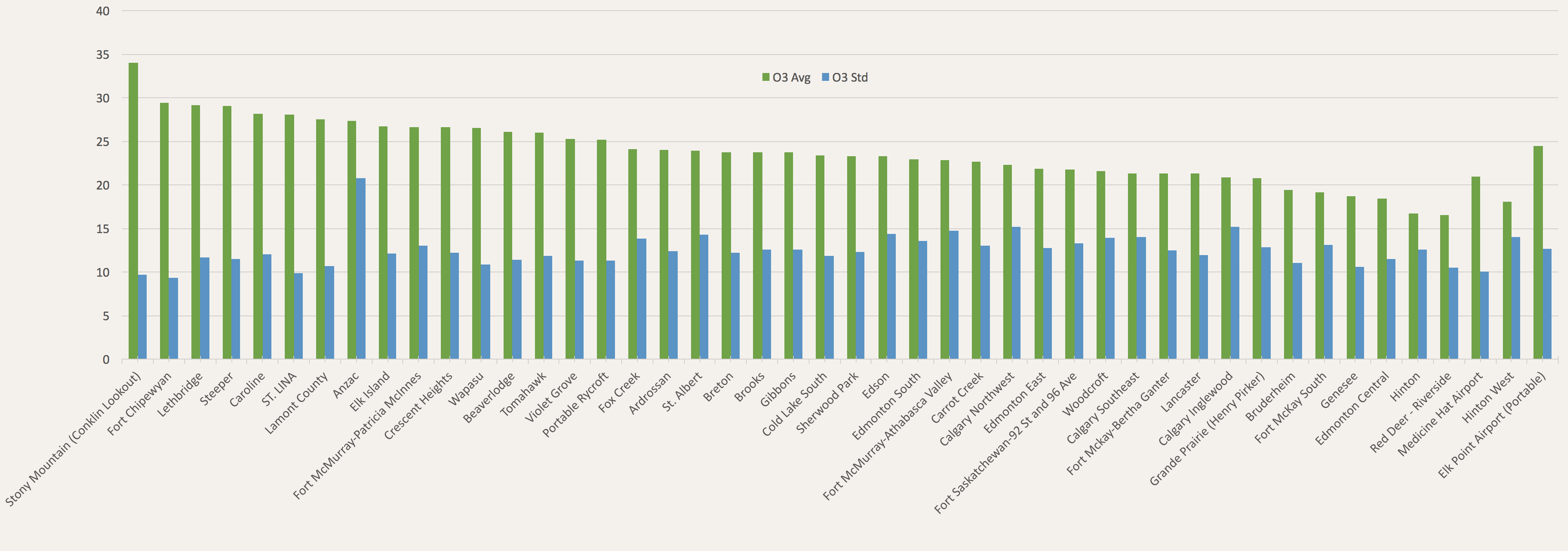
Average THC Concentration (Parts Per Billion)
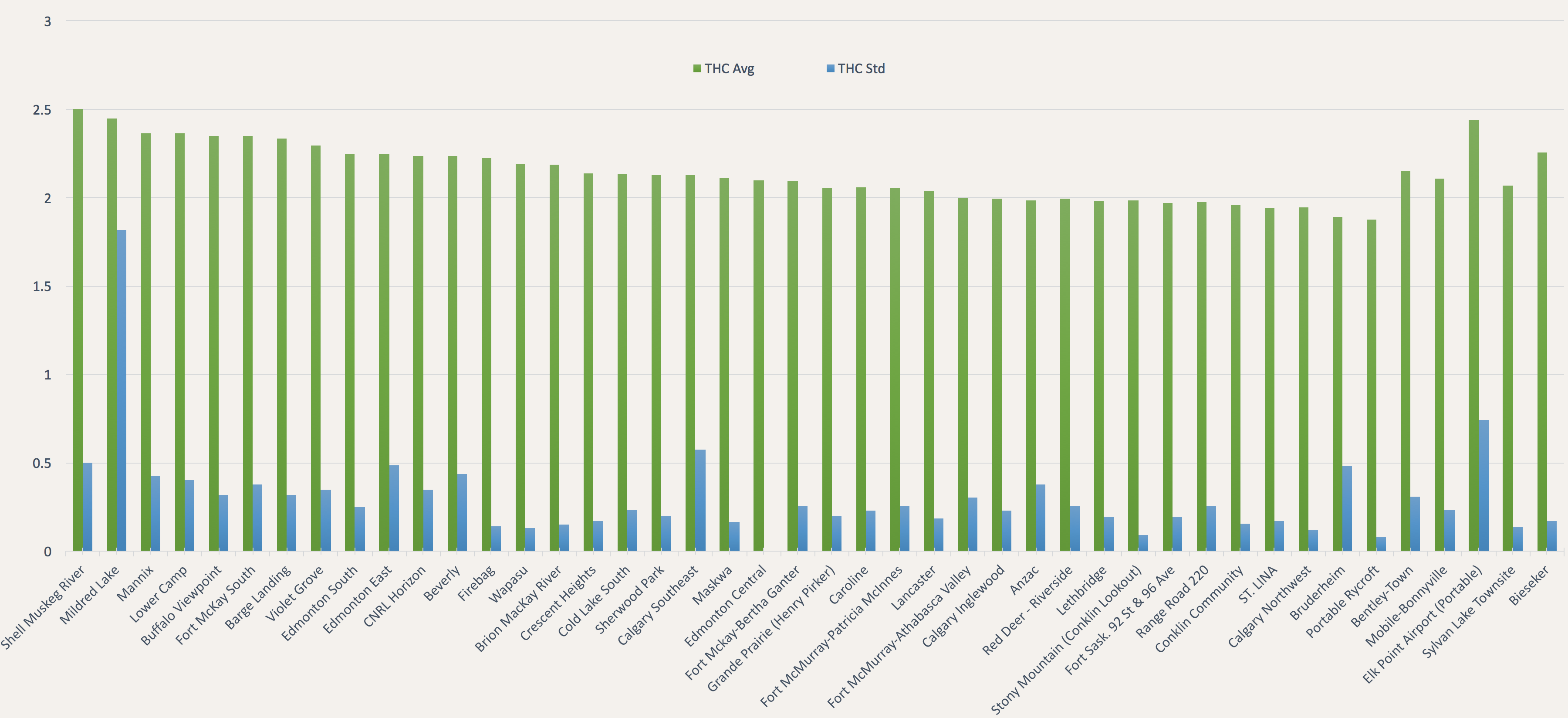
Average PM2.5 Concentration (Parts Per Million)
